Presidential Candidates Rarity In Ann Arbor
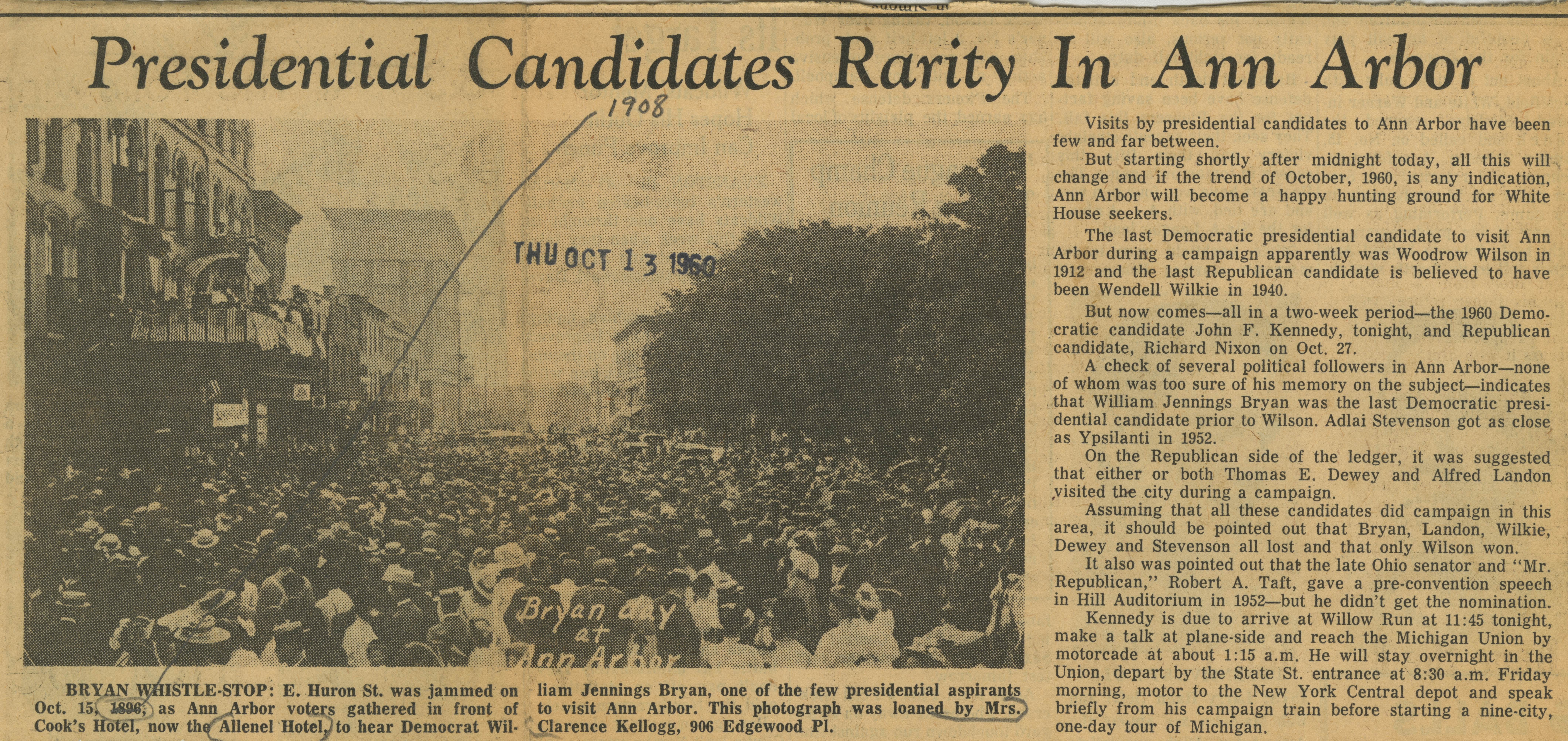
Parent Issue
Day
13
Month
October
Year
1960
Copyright
Copyright Protected
- Read more about Presidential Candidates Rarity In Ann Arbor
- Log in or register to post comments
University of Michigan Student Thomas E. Dewey in Michigan Union Opera Production, 1921
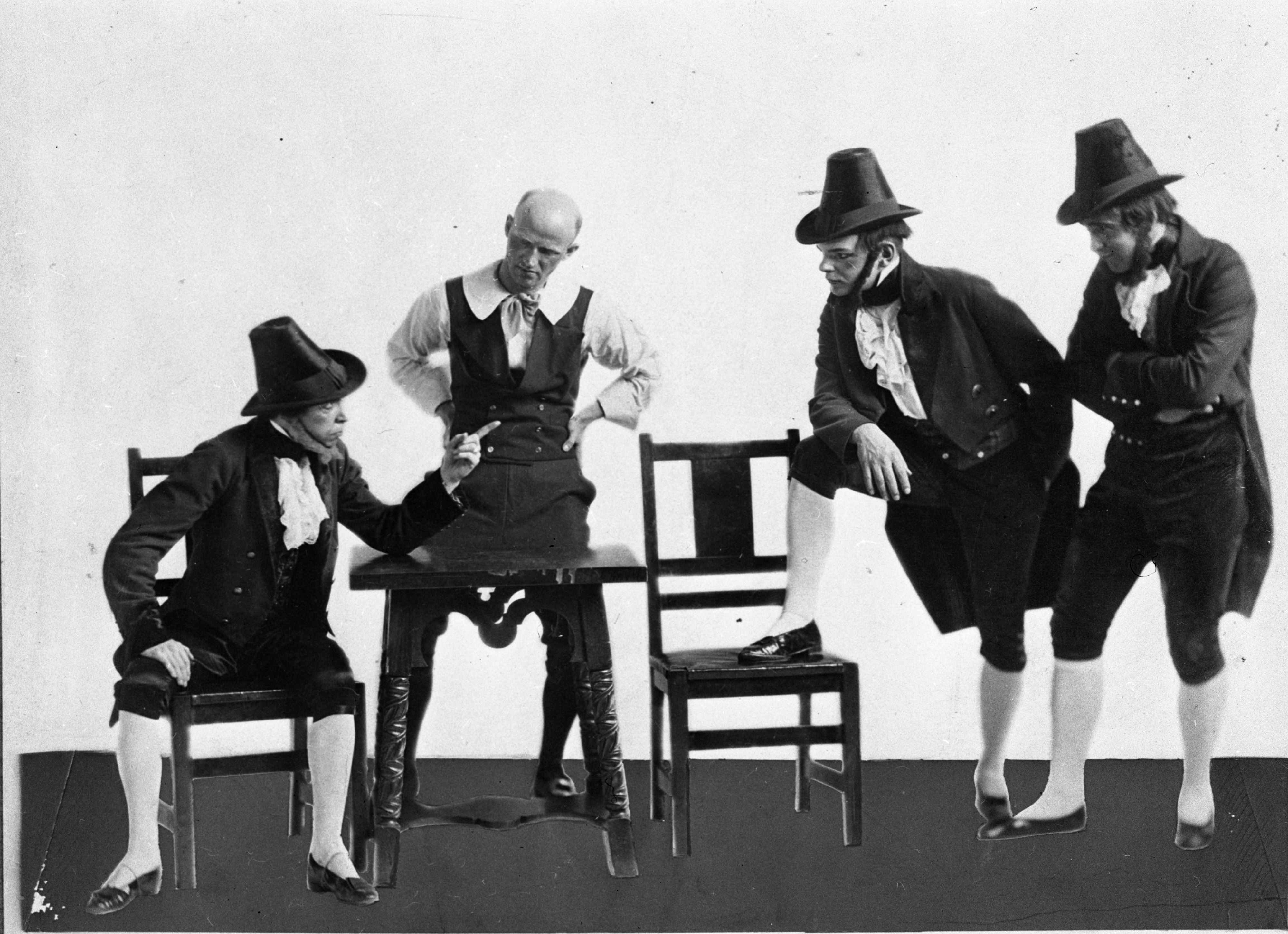
Year:
1921
Copyright
Copyright Protected
Gov. Thomas E. Dewey and Frances Hutt Dewey Meet Students at the Union During University of Michigan Campus Tour, July 1947 Photographer: Maiteland Robert La Motte

Year:
1947
Copyright
Copyright Protected
Gov. Thomas E. Dewey and Family Meet University of Michigan Student Richard Ando of Hawaii, July 1947 Photographer: Maiteland Robert La Motte

Year:
1947
Published In:
Ann Arbor News, August 1, 1947
Caption:
Hawaiian Student Meets Celebrities: One of the most surprised persons in Ann Arbor yesterday was Richard E. Ando, University medical student from Honolulu, Hawaii. He was strolling along the street when Gov. Dewey's party passed by, stopped, and was introduced by Arthur L. Brandon, director of the University's information services. Eleven-year-old John Dewey is shaking hands with Ando, while behind John is Thomas E. jr., 14. Brandon stands at Ando's side.
Ann Arbor News, August 1, 1947
Caption:
Hawaiian Student Meets Celebrities: One of the most surprised persons in Ann Arbor yesterday was Richard E. Ando, University medical student from Honolulu, Hawaii. He was strolling along the street when Gov. Dewey's party passed by, stopped, and was introduced by Arthur L. Brandon, director of the University's information services. Eleven-year-old John Dewey is shaking hands with Ando, while behind John is Thomas E. jr., 14. Brandon stands at Ando's side.
Copyright
Copyright Protected
Gov. Thomas E. Dewey and Sons Tour University of Michigan West Quad, July 1947 Photographer: Maiteland Robert La Motte

Year:
1947
Published In:
Ann Arbor News, August 1, 1947
Caption:
In Dormitory Room: John and Tom Dewey, jr., were anxious to see some dormitory rooms during their tour of the campus. So the party, complete with photographers, guards and sightseers, stopped off at West Quad and visited the room of Sam Stinson of Ona, West Va., and Edward Hunker of Port Huron.
Ann Arbor News, August 1, 1947
Caption:
In Dormitory Room: John and Tom Dewey, jr., were anxious to see some dormitory rooms during their tour of the campus. So the party, complete with photographers, guards and sightseers, stopped off at West Quad and visited the room of Sam Stinson of Ona, West Va., and Edward Hunker of Port Huron.
Copyright
Copyright Protected
Gov. Thomas E. Dewey's Tour of University of Michigan Includes Medical Building, July 1947 Photographer: Maiteland Robert La Motte
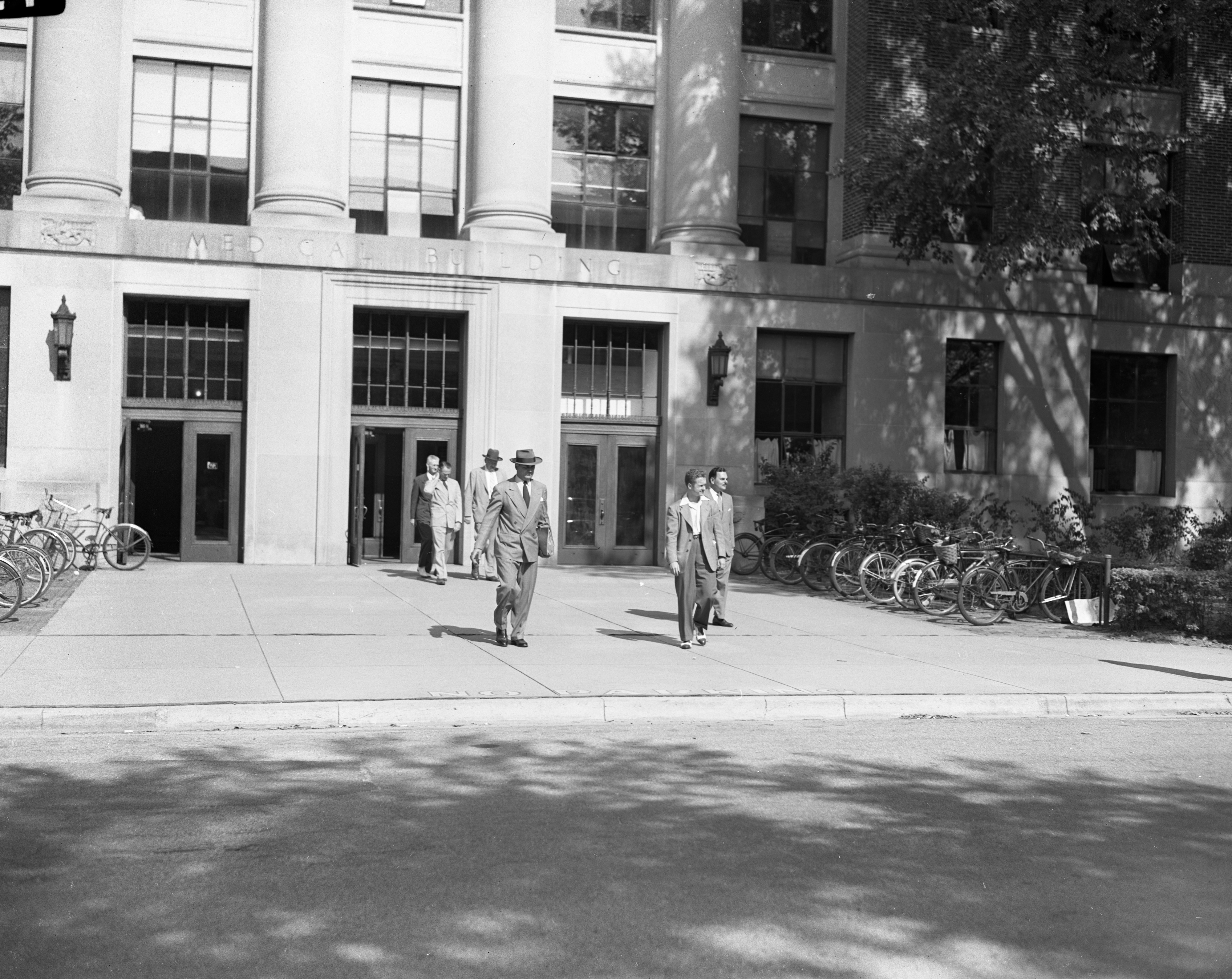
Year:
1947
Copyright
Copyright Protected
Gov. Thomas E. Dewey and Family Greeted at Michigan Union, July 1947 Photographer: Maiteland Robert La Motte

Year:
1947
Copyright
Copyright Protected
Gov. Thomas E. Dewey Greeted By University of Michigan President Alexander G. Ruthven, July 1947 Photographer: Maiteland Robert La Motte

Year:
1947
Published In:
Ann Arbor News, August 1, 1947
Caption:
Ruthven Greets Dewey: Alexander G. Ruthven greeted Gov. Dewey as he arrived at the Michigan Union yesterday noon. The president of the University was host at a luncheon at the Union attended by regents, executive officers and their wives and the Dewey family. Later many of the New York governor's friends greeted him at a private reception in the Union.
Ann Arbor News, August 1, 1947
Caption:
Ruthven Greets Dewey: Alexander G. Ruthven greeted Gov. Dewey as he arrived at the Michigan Union yesterday noon. The president of the University was host at a luncheon at the Union attended by regents, executive officers and their wives and the Dewey family. Later many of the New York governor's friends greeted him at a private reception in the Union.
Copyright
Copyright Protected
Gov. Thomas E. Dewey and Frances Hutt Dewey Visit University of Michigan Campus, July 1947 Photographer: Maiteland Robert La Motte
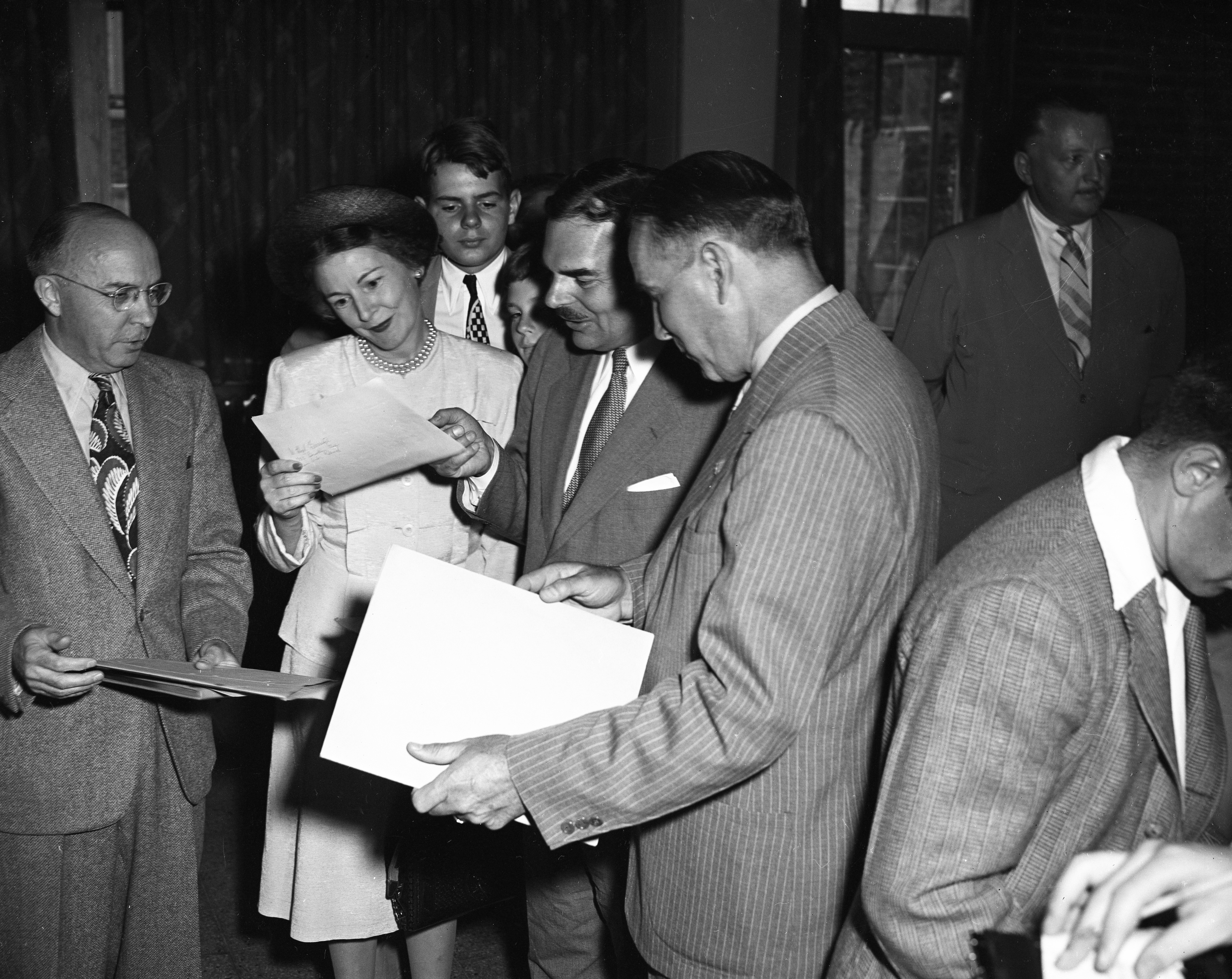
Year:
1947
Copyright
Copyright Protected
Gov. Thomas E. Dewey Notes Big Changes To University of Michigan Campus Since 1921, July 1947 Photographer: Maiteland Robert La Motte
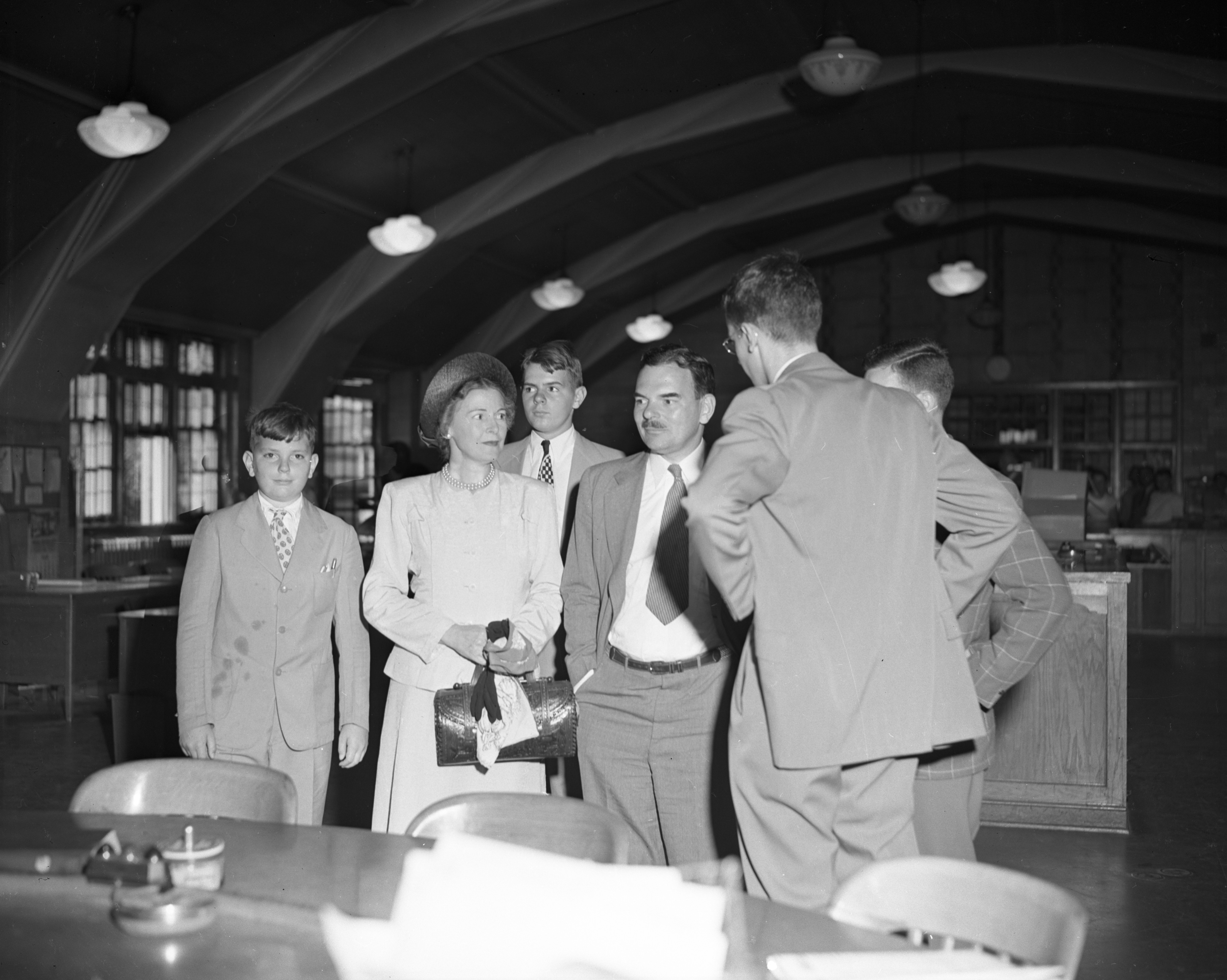
Year:
1947
Published In:
Ann Arbor News, August 1, 1947
Caption:
Things Have Changed: Wherever he went yesterday on his tour of the campus, Dewey exclaimed at the manifold changes that have come over the University. Above he listens reflectively while Daily Co-Managing Editor John Campbell tells him what the publication is like nowadays. The tour was taken, Dewey said, to "sell" his son, Tom, on the University.
Ann Arbor News, August 1, 1947
Caption:
Things Have Changed: Wherever he went yesterday on his tour of the campus, Dewey exclaimed at the manifold changes that have come over the University. Above he listens reflectively while Daily Co-Managing Editor John Campbell tells him what the publication is like nowadays. The tour was taken, Dewey said, to "sell" his son, Tom, on the University.
Copyright
Copyright Protected